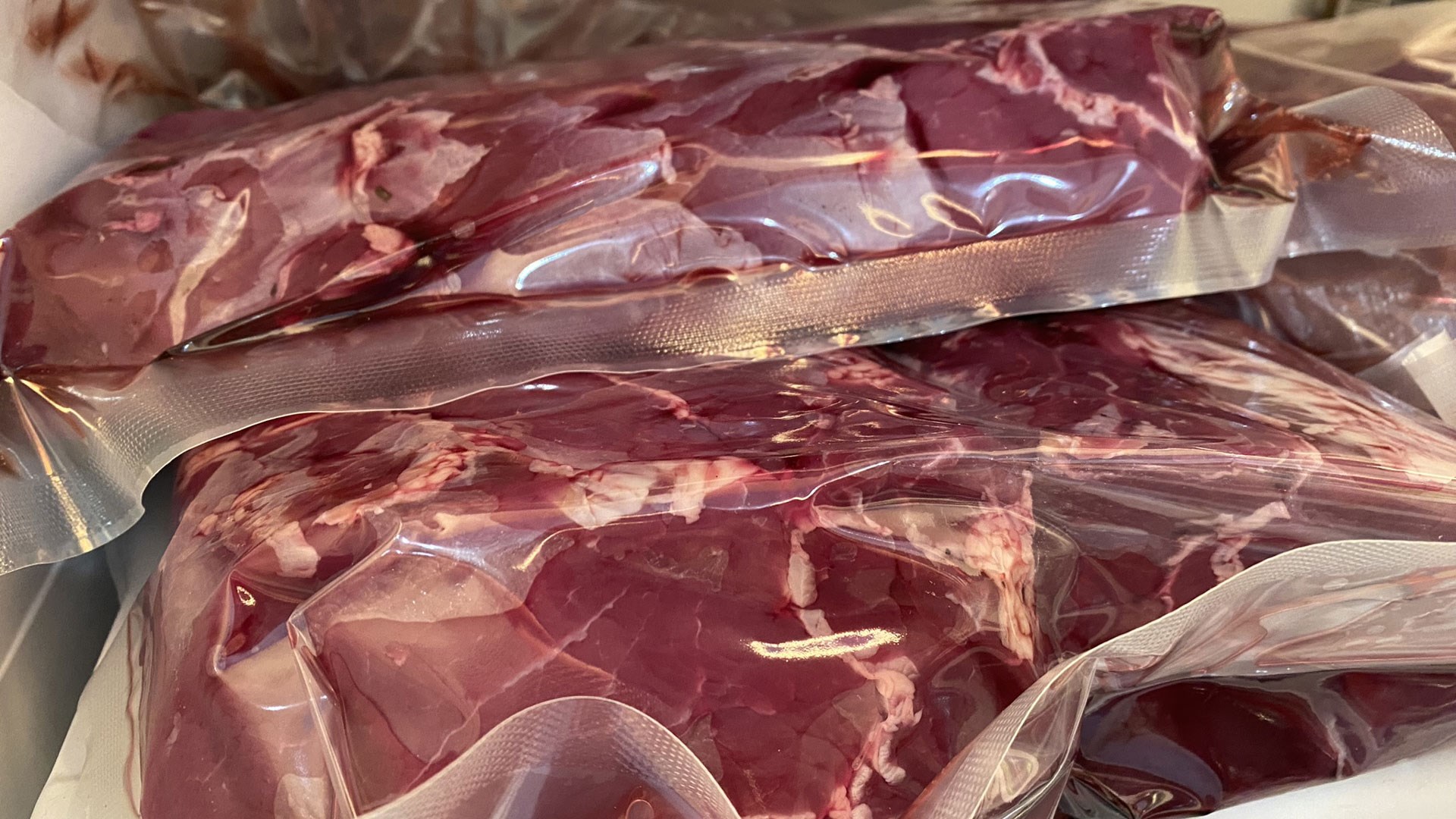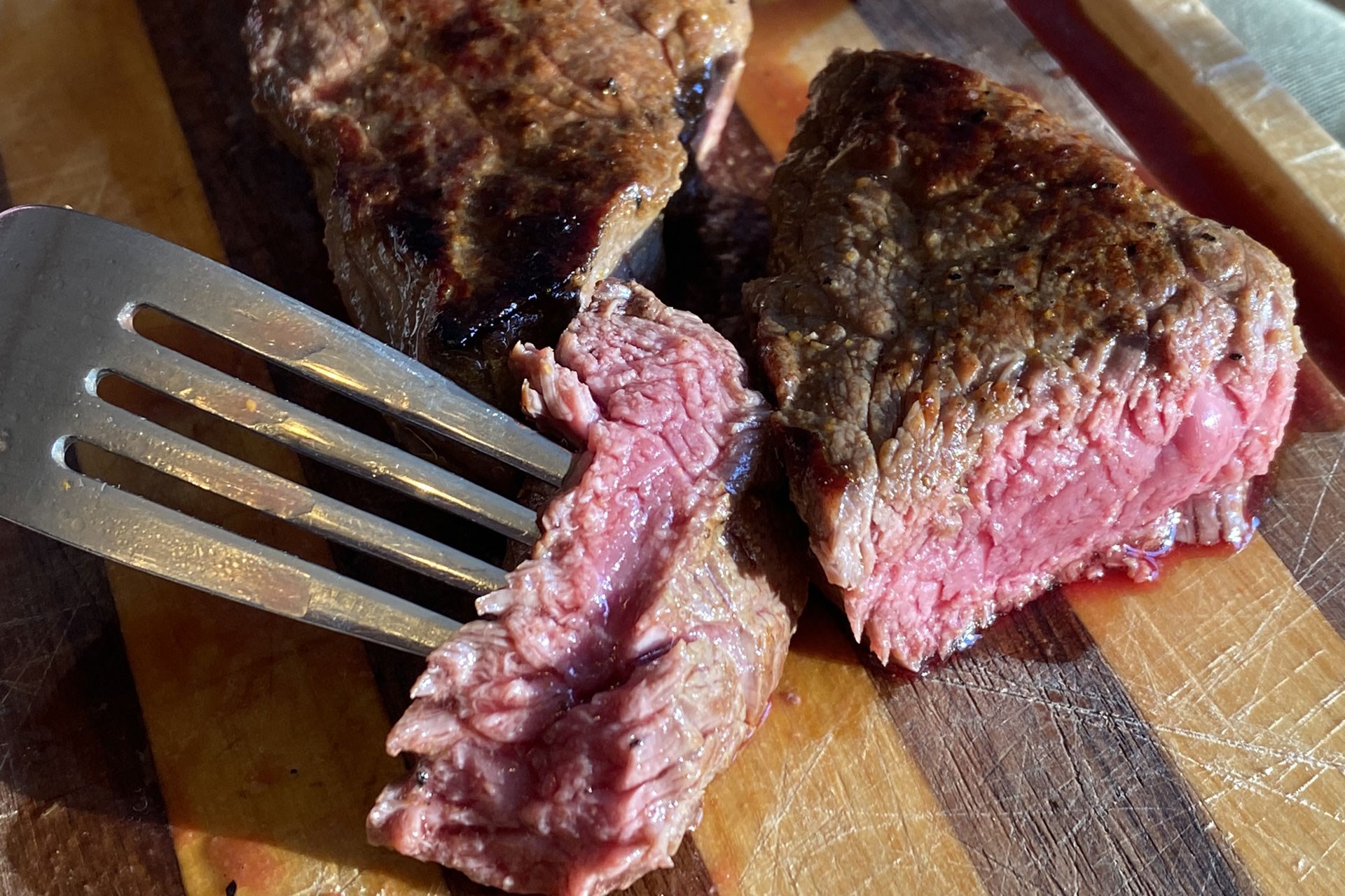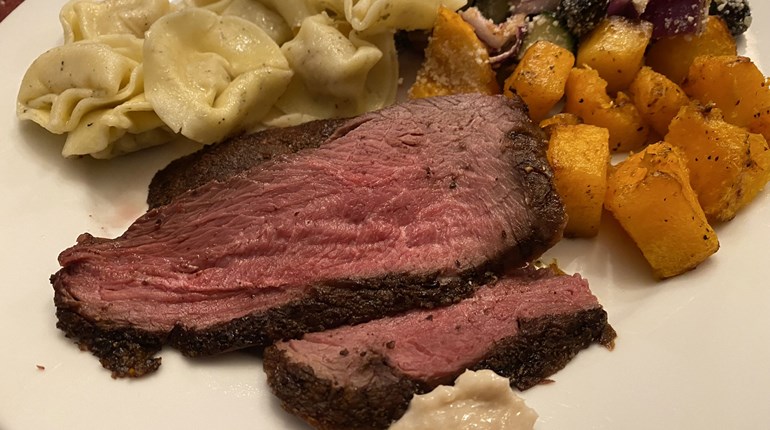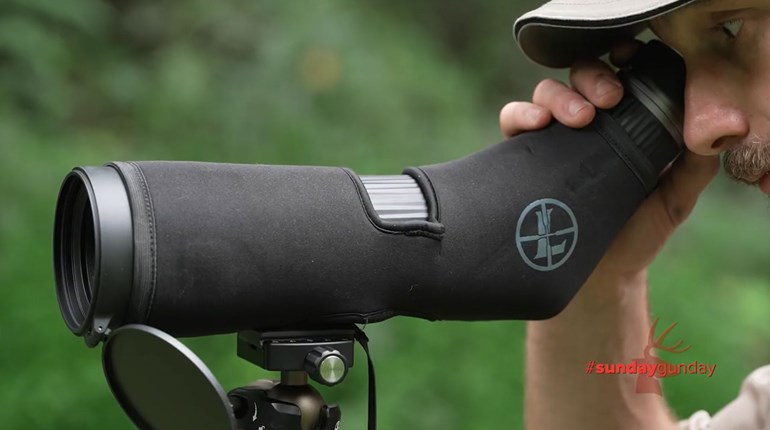Aging venison often generates passionate discussion around flavor, tenderness and even waste. Some swear that well-aged meat has a more complex flavor, like fine-aged whisky. Others will tell you that the dry rind created on the surface of all exposed muscles is a waste of meat.
Aging meat involves enzymes that break down protein or muscle fibers. The process literally allows the meat to decay. However, it is not spoilage when temperature, humidity, and air circulation are controlled. Not everyone has access to meat coolers and controlled environments, so many deer are processed quickly after harvest.

Recently, I visited a couple of friends who own and operate a German-style butcher and sausage processing facility. We discussed aging meat at length and soon focused on wet-aging meat. The gents have cut and processed thousands of pounds of venison a year, and now wet age all of the meat their families’ harvest.
The concept is simple: vacuum- or chamber-seal prime cuts of meat, and ensure no air is left in the bags. Air will allow bacteria to grow, and checking the bag for leaks ensures that your meat is aging correctly. The bags of prime-cut meat are then stored in a refrigerator for seven to 30 days. A deer does not take as long to age as an elk, so experimenting is the best way to decide the exact number of days. Backstraps, top sirloin, inside rounds and other choice cuts will age without losing meat to drying. Steaks are tender, and most dinner guests will concur that the wet-aging process produces excellent results.
Benefits
- Meat can be processed and refrigerated soon after harvest.
- Prime cuts can be sealed to age, while the trim is ground or frozen in batches for making sausage.
- Prime cuts can be portioned and wrapped for freezing later at a more convenient time.
- The process tenderizes the meat.
- Flavor is developed by enzyme action.
- Wet aging provides meat handling options when hunting in warm or hot climates.
- There is no meat loss to drying.
- You can thaw frozen meat and wet age it.
Some will insist that dry aging does develop more flavor. It would only seem natural that dry aging condenses flavor as moisture content reduces. The question will be whether the difference is significant enough to continue dry aging. Wet aging certainly tenderizes the meat and should be considered for that reason alone.
Deer do not take much aging to become tender. However, a big bull elk, moose or bison benefits tremendously from wet aging. It is worth experimenting with tasting the results and tenderness for yourself.
The best way to answer the question about wet aging is to experiment. Take a piece of backstrap and cut it into six-inch lengths. Vacuum seal the pieces and mark the date started on each. Cut one-inch steaks on days seven, 10 and 14, and sear them for three minutes per side, then wrap them in foil and rest for three minutes before eating. The samples will allow you to taste the difference and make future decisions on wet aging versus dry aging and for how many days.

Seared Loin Steak
Ingredients
- 6 venison loin steaks cut one-inch thick
- 2 Tbsp cooking oil
- 2 Tbsp butter
- Preferred steak seasonings like Hi Mountain Venison Rub or Bearded Butcher Original
Directions
- Season the steaks and allow them to warm to room temperature.
- Add the cooking oil to a Camp Chef cast-iron frying pan over medium-high heat.
- Place steaks in the hot frying pan and sear each side for three minutes.
- Remove the steaks from the frying pan, place on foil, add butter, and wrap tight to rest for three minutes.
- Serve the steaks while hot.
*To brown the steaks for extra flavor, do not overcrowd the frying pan and ensure it stays hot to sear both sides.























